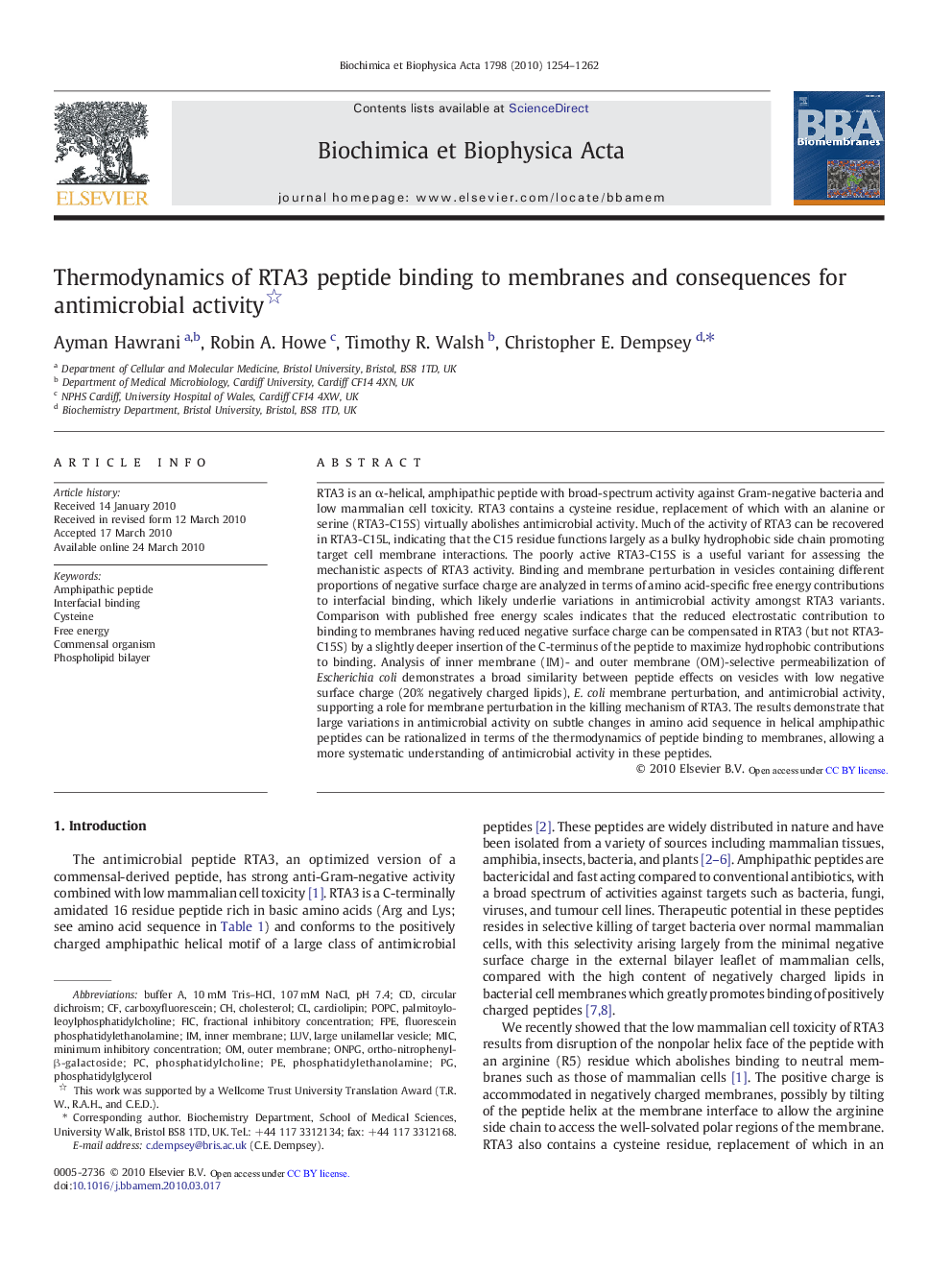| Article ID | Journal | Published Year | Pages | File Type |
|---|---|---|---|---|
| 1944867 | Biochimica et Biophysica Acta (BBA) - Biomembranes | 2010 | 9 Pages |
RTA3 is an α-helical, amphipathic peptide with broad-spectrum activity against Gram-negative bacteria and low mammalian cell toxicity. RTA3 contains a cysteine residue, replacement of which with an alanine or serine (RTA3-C15S) virtually abolishes antimicrobial activity. Much of the activity of RTA3 can be recovered in RTA3-C15L, indicating that the C15 residue functions largely as a bulky hydrophobic side chain promoting target cell membrane interactions. The poorly active RTA3-C15S is a useful variant for assessing the mechanistic aspects of RTA3 activity. Binding and membrane perturbation in vesicles containing different proportions of negative surface charge are analyzed in terms of amino acid-specific free energy contributions to interfacial binding, which likely underlie variations in antimicrobial activity amongst RTA3 variants. Comparison with published free energy scales indicates that the reduced electrostatic contribution to binding to membranes having reduced negative surface charge can be compensated in RTA3 (but not RTA3-C15S) by a slightly deeper insertion of the C-terminus of the peptide to maximize hydrophobic contributions to binding. Analysis of inner membrane (IM)- and outer membrane (OM)-selective permeabilization of Escherichiacoli demonstrates a broad similarity between peptide effects on vesicles with low negative surface charge (20% negatively charged lipids), E.coli membrane perturbation, and antimicrobial activity, supporting a role for membrane perturbation in the killing mechanism of RTA3. The results demonstrate that large variations in antimicrobial activity on subtle changes in amino acid sequence in helical amphipathic peptides can be rationalized in terms of the thermodynamics of peptide binding to membranes, allowing a more systematic understanding of antimicrobial activity in these peptides.
